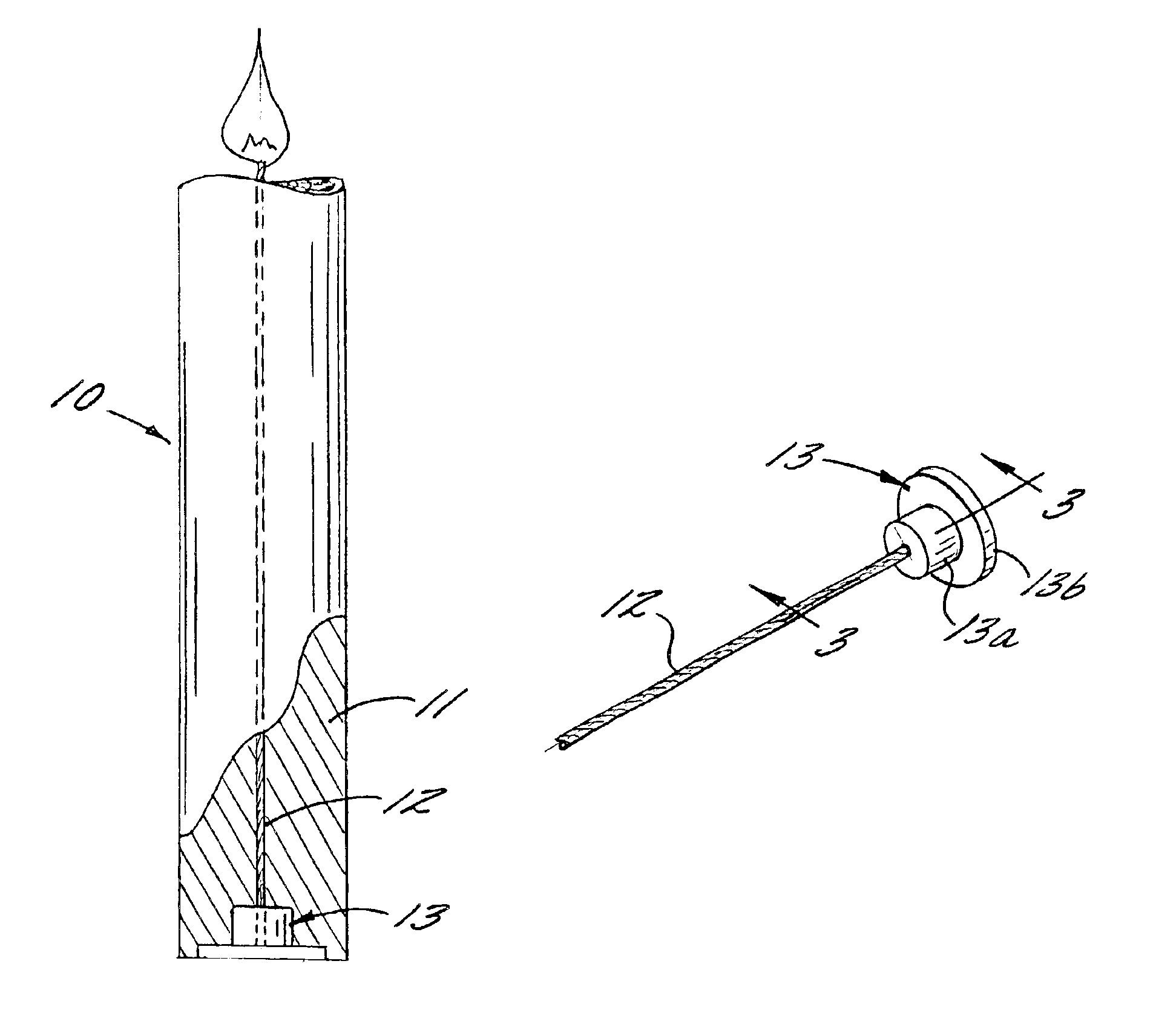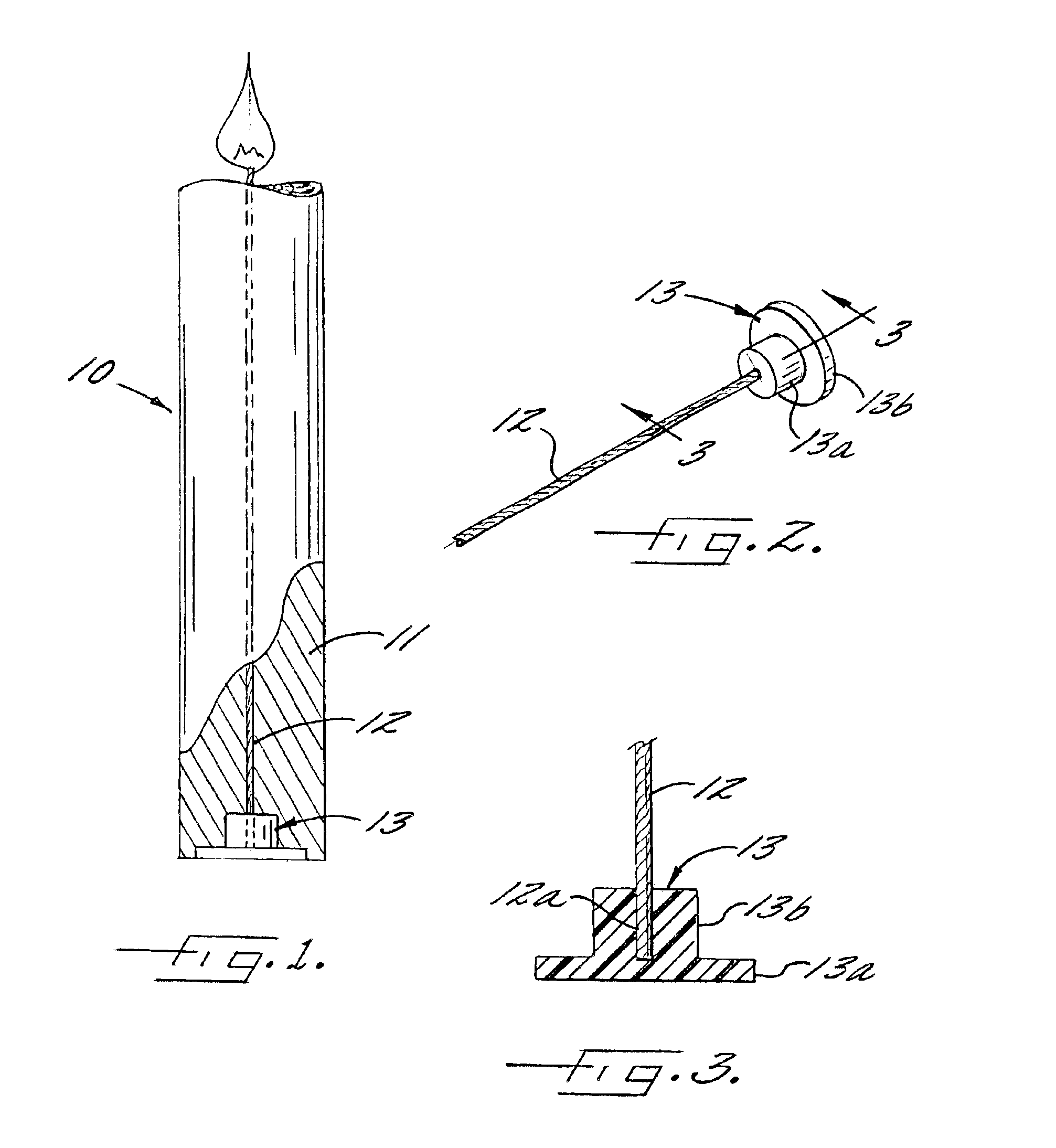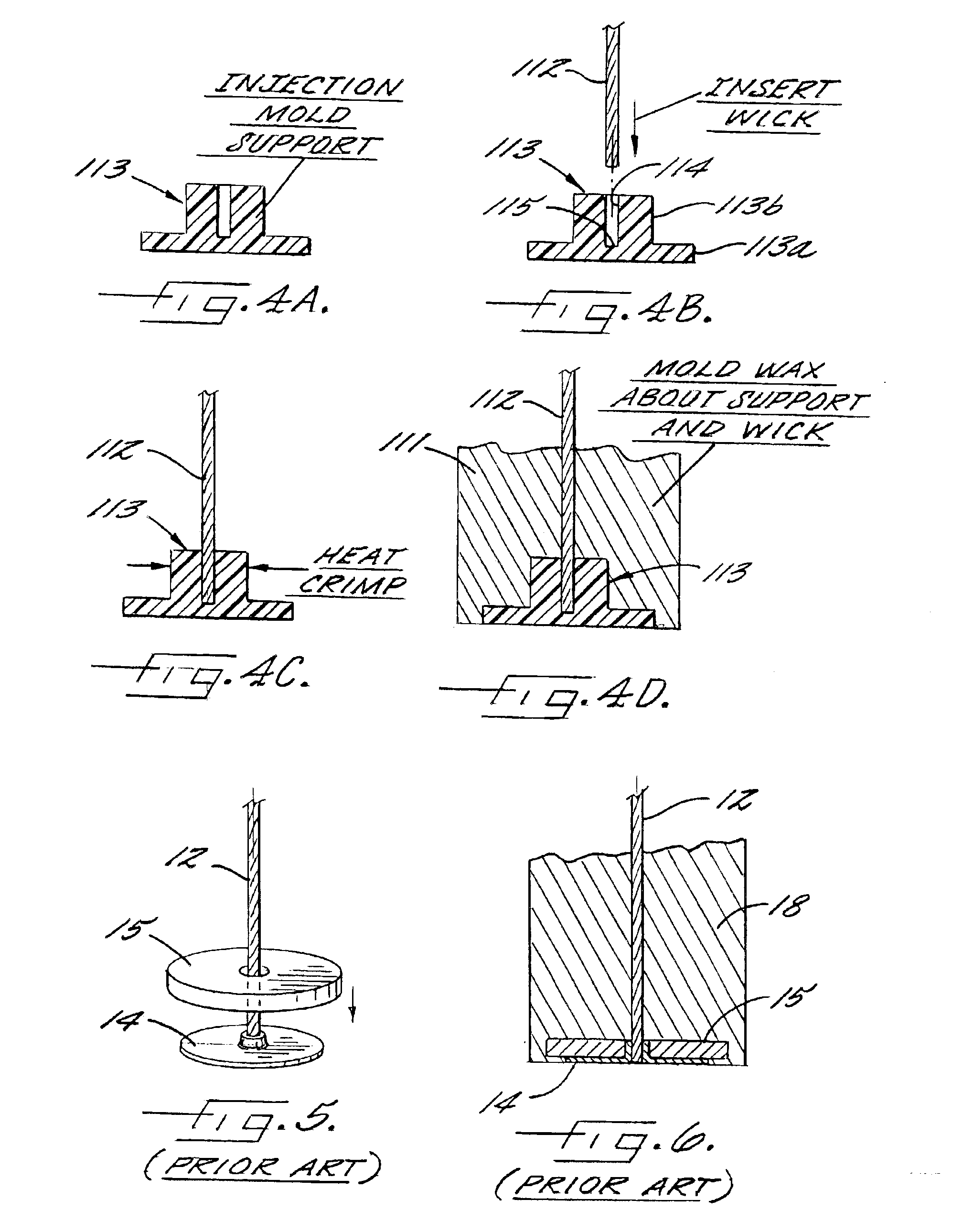Safety candle and method of forming same
a safety candle and wick technology, applied in the field of candles, can solve the problems of difficult and expensive manufacturing, limited to container candles, and wicks and wick supports are commonly referred to as “flare-up” or “flash-over” and other problems, to achieve the effect of high melt temperatur
- Summary
- Abstract
- Description
- Claims
- Application Information
AI Technical Summary
Benefits of technology
Problems solved by technology
Method used
Image
Examples
second embodiment
the prevent invention, and its method of manufacture are illustrated in FIGS. 4A-4D. In this embodiment, the wick support 113 is separately molded in a conventional injection molding machine, and the support includes a base or flange portion 113a and a cylindrical pedestal portion 113b of unitary one piece construction. Also, the support is molded so as to include a coaxial bore 114 which extends thereinto from the upper end. The bore 114 has a length which extends substantially the full length of the pedestal portion, and it includes a closed end 115. Alternatively, the bore could be formed by a drilling operation.
As illustrated in FIG. 4B, the lower end portion of a wick 112 is inserted coaxially into the bore of the support, with the end of the wick preferably abutting the closed end 115 of the bore 114.
Next, and as illustrated in FIG. 4C, the pedestal portion is crimped laterally so as to fixedly secure the wick 112 in the bore. Preferably, this crimping operation is accompanied...
PUM
| Property | Measurement | Unit |
|---|---|---|
| melting point | aaaaa | aaaaa |
| melting temperature | aaaaa | aaaaa |
| thickness | aaaaa | aaaaa |
Abstract
Description
Claims
Application Information
 Login to View More
Login to View More - R&D
- Intellectual Property
- Life Sciences
- Materials
- Tech Scout
- Unparalleled Data Quality
- Higher Quality Content
- 60% Fewer Hallucinations
Browse by: Latest US Patents, China's latest patents, Technical Efficacy Thesaurus, Application Domain, Technology Topic, Popular Technical Reports.
© 2025 PatSnap. All rights reserved.Legal|Privacy policy|Modern Slavery Act Transparency Statement|Sitemap|About US| Contact US: help@patsnap.com



